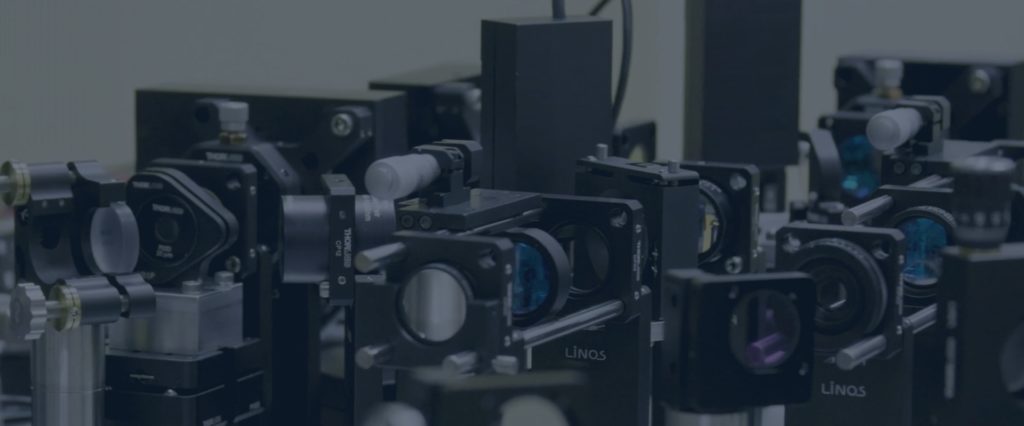In our last blog post (Fast and Precise Laser Pulse Compression with the Linear Array DM) we discussed research being done in the Cui Lab at HHMI’s Janelia Farm Research Campus that used our Linear Array DM for laser pulse compression. In part two we examine a two photon fluorescence microscopy project led by associate Reto Fiolka at Janelia Farm that illustrates the use of the Linear Array’s potential as a pulse compressor for imaging applications using the phase resolved interferometric spectral modulation (PRISM) optimization technique.
The Linear Array pulse compressor setup was used to restore the laser pulse to its transform limited state, thus improving the ability to excite fluorescence by two photon absorption. A sample consisting of 10 micron diameter fluorescence beads (emission: 465 nm) was prepared and spread on a cover-slip. The laser beam first propagated through the pulse compressor and was subsequently focused on the sample using a 20X NA 0.5 Nikon objective. A 2D image was obtained by translating a motorized sample stage. Without spectral pulse shaping, only a weak fluorescence signal could be obtained (See figures a and c). Since the objective adds significant additional dispersion to the laser pulse, the spectral phase correction that had been determined previously using the photodiode could not be used. Therefore PRISM optimization was repeated using the fluorescence signal coming from the beads itself as a feedback signal.
Janelia Farm’s results show a dramatic increase in fluorescence signal for the optimized spectral phase (see figures b and d). The signal strength was increased by a factor of ~6.5
According to Fiolka, “The tested device represents a promising alternative to liquid crystal displays, since the MEMS technology enables high filling factor, high efficiency and operation speed, exceptional phase stability and accuracy and can be used over a very broad wavelength spectrum.”
We’re very excited about these results and we are currently working with other groups interested in reproducing these results on tissue samples. Thanks again to Dr. Fiolka and the Janelia Farm group for their efforts in improving two photon imaging techniques!!
More details can be found in our Linear Array white paper which includes an application overview of this exciting project. You can also link to the research directly using the links to the Cui Lab and the scientific publication above.
Check more
Related Articles

Defense TechConnect Conference and Expo: Fun in the Sun with the MRR
Last week I was fortunate enough to be able to parade BMC’s Modulating RetroReflector (MRR) in front of multiple audiences affiliated with the Defense community at the Defense TechConnect (DTC) Conference and Expo in Tampa, Florida.
# Two Photon Microscopy 11.01.2018
Read more
MiFoBio 2018: AO Microscopy in Action
Recently, Boston Micromachines sponsored MiFoBio (Functional Microscopy in Biology), an event that brought together the microscopy community, academics and professionals alike, to attend courses and workshops that explored the understanding and current trends of biological imaging.
# Two Photon Microscopy 10.16.2018
Read more

